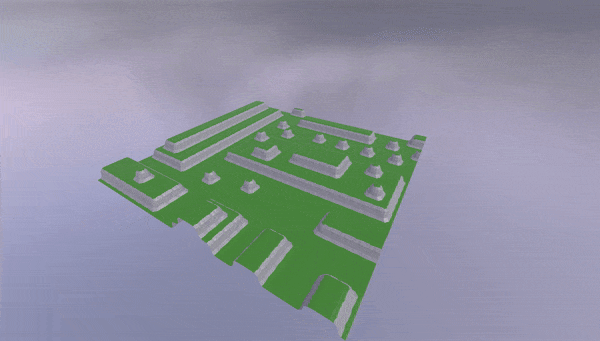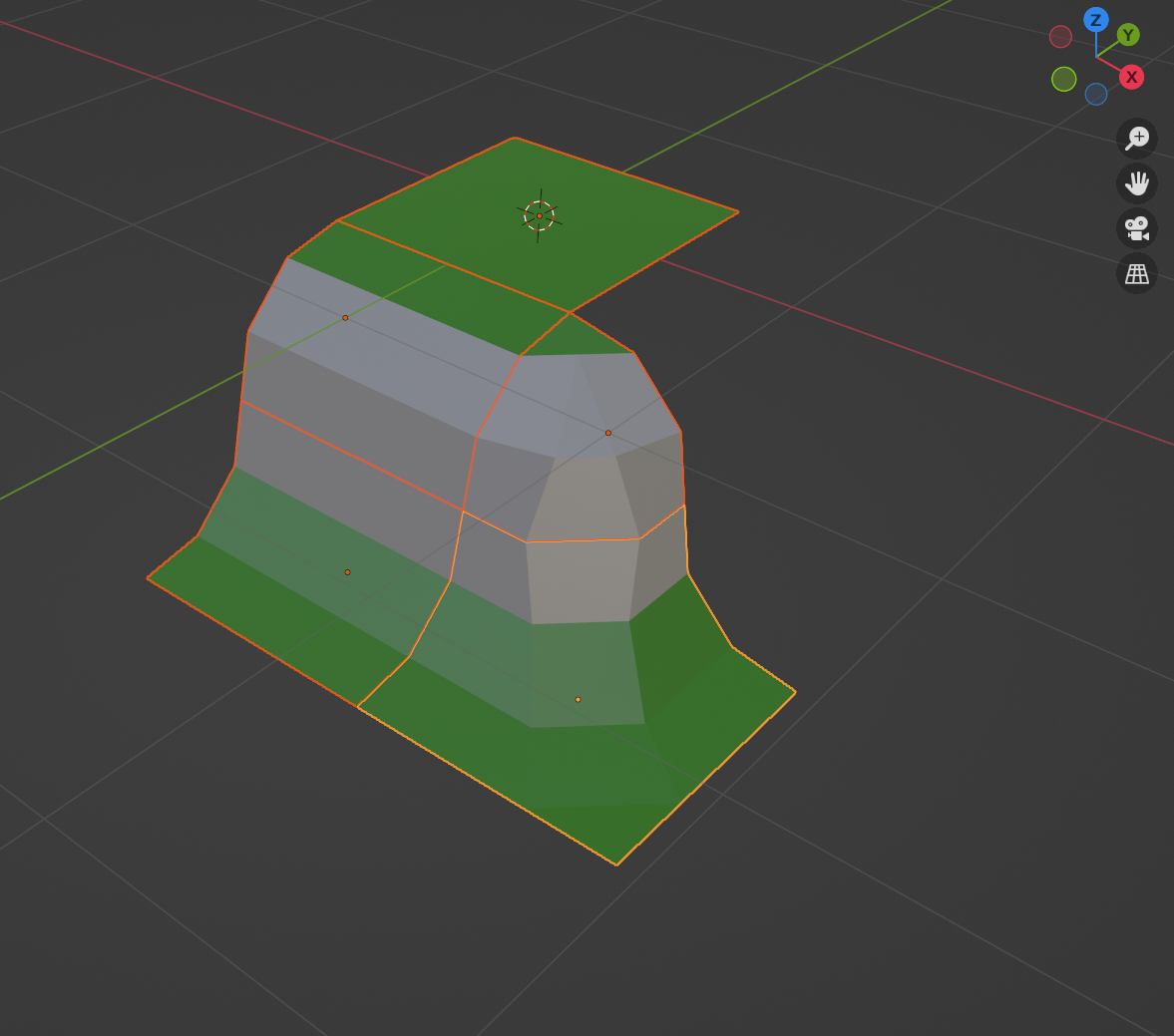A simple implementation of Wave Function Collapse for procedural terrain generation written in Golang. This is largely a direct port of Martin Donald's work in Godot. An overview of his process and inspiration can be found here.
The purpose of pulling this portion of the process out of GDScript and into Golang is to minimize the amount of computation that needs to occur in-engine. Long-term, I would like to use this to design an API capable of generating, storing, and retrieving maps.
See the GodotDemo directory for more information.
I used this simple, five-module set that I made in Blender:
-
Create a compatible tileset in Blender. Each module (prototype) must be contained in a 1x1x1 meter bounding box; asymmetrically sized modules are not currently supported. Generally, it is advised to create non-enclosed modules; that is, deformed planes tend to work better than cubes and other "solid" shapes.
- TODO - make more explicit, provide the simple example set
-
Create a script that calculates basic adjacency constraints. I am using a modified version of Martin Donald's Blender script, available to his Patreons here. The output of this script should be a JSON object whose keys are prototype IDs or names and whose values can be represented by the following Golang struct:
type WFCPrototype struct { MeshName string `json:"mesh_name"` MeshRotation int `json:"mesh_rotation"` PosX string `json:"posX"` NegX string `json:"negX"` PosY string `json:"posY"` NegY string `json:"negY"` PosZ string `json:"posZ"` NegZ string `json:"negZ"` ConstrainTo string `json:"constrain_to"` ConstrainFrom string `json:"constrain_from"` Weight int `json:"weight"` ValidNeighbours [][]string `json:"valid_neighbours"` }
- TODO - make more explicit, provide simplified examples or pseudocode
-
Run this program with
go run . --input prototype_data.json --output map.json, substitutingprototype_data.jsonandmap.jsonas needed. -
Use the
map.jsonfile to load the map in your engine of choice. A demonstration can be found in theGodotDemodirectory.

